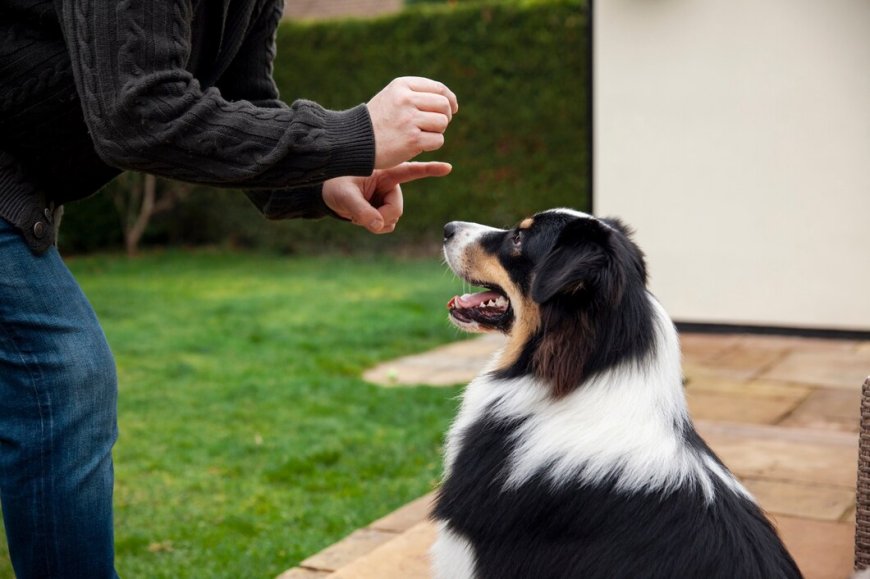The Basics of Daily Pet Training
Consistency is Key
One of the most important aspects of pet training is consistency. Pets thrive on routine and predictability. By maintaining a consistent training schedule, you help your pet understand what is expected of them. This includes using the same commands, rewarding good behavior consistently, and correcting unwanted behavior in a similar manner each time.
Positive Reinforcement Works Wonders
Positive reinforcement is a powerful tool in pet training. This method involves rewarding your pet for good behavior, which encourages them to repeat that behavior. Rewards can include treats, praise, or playtime. The key is to reward your pet immediately after they perform the desired behavior so they can make the connection between the action and the reward.
Short and Sweet Training Sessions
Pets, especially young ones, have short attention spans. Keeping training sessions short and engaging helps maintain their interest and prevents frustration. Aim for sessions that last between 5 to 10 minutes, multiple times a day. This approach ensures that your pet remains focused and retains the information better.
Understanding Your Pet's Body Language
Being able to read your pet's body language is crucial for effective training. Understanding when your pet is stressed, anxious, or excited can help you adjust your training methods accordingly. For example, if your pet is showing signs of stress, it might be best to take a break and resume training later.

Advanced Training Techniques
Clicker Training: A Sound Approach
Clicker training is a popular method that uses a small device that makes a clicking sound to mark desired behaviors. The click is followed by a reward, helping your pet associate the sound with positive outcomes. This method can be particularly effective for teaching complex behaviors and tricks.
Leash Training: Walking the Walk
Leash training is essential for dogs, ensuring they walk calmly and safely by your side. Start by letting your dog get used to wearing a collar and leash indoors. Gradually introduce short walks, rewarding your dog for staying close and not pulling. Consistency and patience are key to successful leash training.
Crate Training: Creating a Safe Space
Crate training can be beneficial for both dogs and cats. It provides them with a safe and secure space, which can help with house training and reduce anxiety. Introduce the crate gradually, making it a positive experience by placing treats and toys inside. Never use the crate as a form of punishment.
Socialization: Meeting and Greeting
Socialization is critical for pets, especially during their early stages of development. Exposing your pet to different environments, people, and other animals helps them become well-adjusted and confident. Positive experiences during socialization can prevent behavioral issues later in life.

Common Training Challenges and Solutions
Dealing with Distractions
Pets can easily get distracted during training sessions. To minimize distractions, start training in a quiet, familiar environment. Gradually introduce distractions as your pet becomes more proficient in their training. This helps them learn to focus on you despite external stimuli.
Addressing Unwanted Behaviors
Unwanted behaviors, such as jumping, barking, or chewing, can be challenging to address. The key is to redirect your pet's behavior to something more acceptable. For example, if your dog jumps on guests, teach them to sit instead. Consistently reward the desired behavior and ignore the unwanted one.
Patience and Persistence Pay Off
Training a pet requires patience and persistence. Progress may be slow at times, but it's important to stay committed to the training process. Celebrate small victories and remain positive, even when faced with setbacks. Your dedication will ultimately lead to a well-behaved pet.
Daily Training Schedule Example
Creating a daily training schedule can help you stay organized and ensure that your pet receives consistent training. Here's an example of a daily training schedule for a dog:
|
Time of Day
|
Activity
|
|---|---|
|
Morning
|
5-minute obedience training (sit, stay, come)
|
|
Mid-Morning
|
10-minute leash training walk
|
|
Afternoon
|
5-minute trick training (roll over, shake)
|
|
Evening
|
5-minute socialization (meeting new people or pets)
|
|
Night
|
5-minute crate training session
|
FAQs
Q: How long should each training session be?
A: Training sessions should be short and engaging, typically lasting between 5 to 10 minutes multiple times a day.
Q: What is positive reinforcement?
A: Positive reinforcement involves rewarding your pet for good behavior to encourage them to repeat that behavior. Rewards can include treats, praise, or playtime.
Q: How can I minimize distractions during training?
A: Start training in a quiet, familiar environment and gradually introduce distractions as your pet becomes more proficient.
Q: What is clicker training?
A: Clicker training uses a small device that makes a clicking sound to mark desired behaviors, followed by a reward to help your pet associate the sound with positive outcomes.
Q: Why is socialization important for pets?
A: Socialization helps pets become well-adjusted and confident by exposing them to different environments, people, and other animals, preventing behavioral issues later in life.
